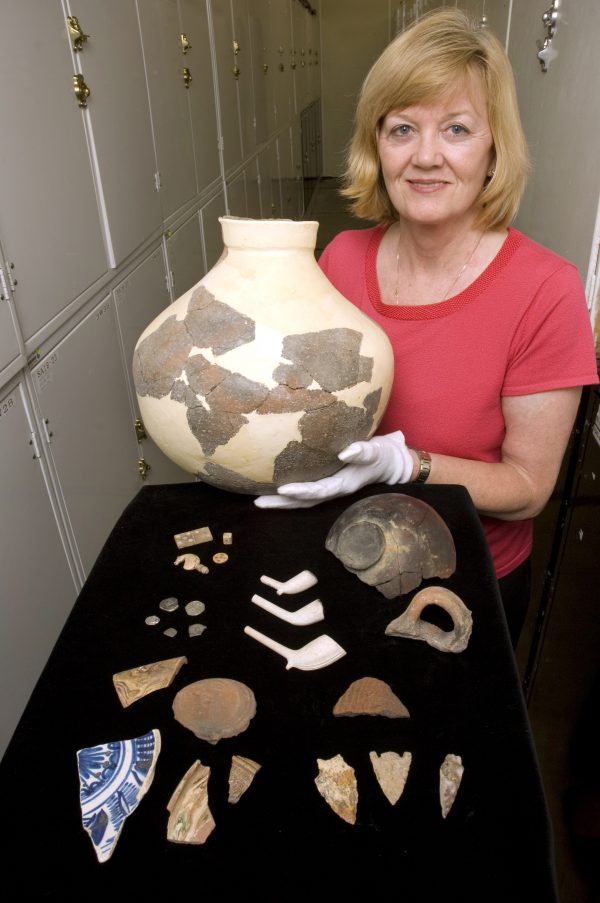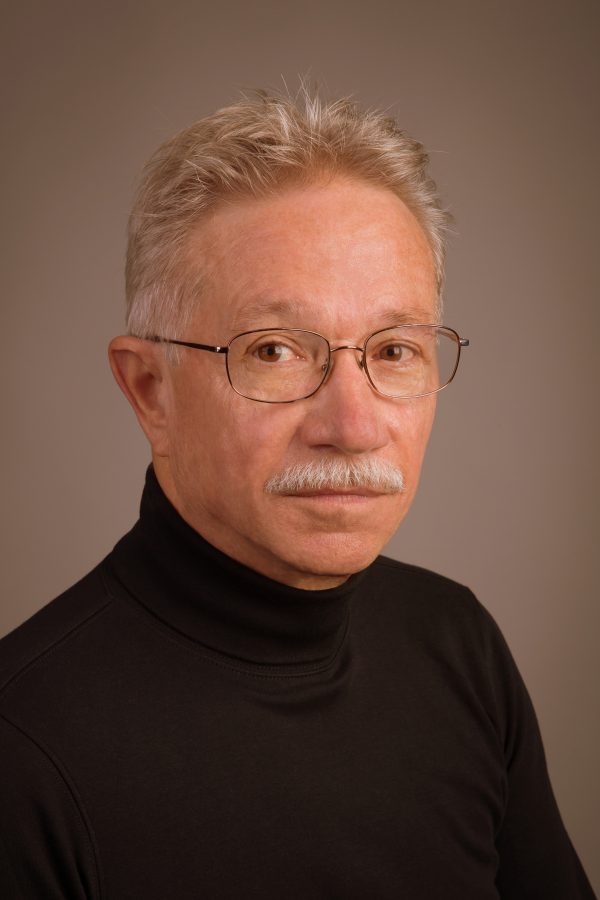Florida Museum of Natural History curators emeritus Kathleen Deagan and Jerald Milanich were recently honored with 2015 lifetime achievement awards from the Southeastern Archaeological Conference for their many years of research on early American and Caribbean societies.

Florida Museum photo by Jeff Gage
Deagan, Florida Museum distinguished curator emerita of historical archaeology, has discovered multiple archaeological sites in the St. Augustine area and uncovered new information about the role women played in early Spanish American and Caribbean societies.
As archaeology curator at the Florida Museum for 35 years, Milanich explored many sites throughout Florida, uncovering ancient artifacts that detail the everyday lives and societies of some of North America’s earliest human inhabitants, including the Paleoindians of 14,000 years ago.
The professional conference gathers annually in the fall to promote growth in the field and educate the public on advancements in archaeology. It recognizes members who have made important contributions to the field as well as the organization with lifetime achievement awards in December.
Historic sites in St. Augustine spurred Deagan’s fascination with Florida’s history and initially drew her to study the interactions of the Sunshine State’s first settlers, while Milanich began his museum career studying the pre-Columbian people who lived in Florida, later focusing on the Native Americans of the colonial period.
“Rediscovering the 16th century through my research by putting together information, not just from one side, but all sides of history, was a great challenge and opportunity,” Milanich said. “It’s a great honor to have this work recognized by my colleagues.”
While Deagan was studying for her bachelor’s degree at the University of Florida, Milanich was the graduate supervisor on her first archaeological dig.
“I hadn’t really thought about Spanish America much until I came to St. Augustine as a student,” Deagan said. “I was fascinated by how different the attitudes and customs of Latin America were, especially the easy interaction of all kinds of races and ethnicities.”
The two archaeologists received their bachelor’s, master’s and doctorate degrees from UF.
“I really think that I was in the right place at the right time,” Deagan said. “When I became involved with SEAC in the early 1970s, there were very few historical archaeologists and even fewer women archaeologists. I was almost a pioneer by default.”

Florida Museum photo by Jill Ribich
This perspective influenced her research on the roles of women in historical Latin American and Caribbean societies.
“Doing my dissertation work in St. Augustine opened my eyes to how influential women had been in Spanish American history,” she said. “Especially as culture brokers between races, through intermarriage.”
Milanich and Deagan both focused on the interactions among different ethnicities. Deagan’s research in St. Augustine eventually took her to the Caribbean where she investigated inclusivity and cultural blending during colonial times.
“I wanted to know if the ‘melting pot’ of cultures that we found in St. Augustine also happened elsewhere,” she said. “You can’t study Spanish America without attending to all the people who created that society, including European, American Indian and African.”
Milanich wanted to learn more about the earliest Native Americans who settled in Florida.
“When the Europeans showed up, the impact on indigenous people was horrendous,” Milanich said. “I was interested in finding out what America was like before and after the Spanish arrival.”
Understanding early America from different perspectives was important for determining historical fact from fiction, Milanich said.
“By studying the artifacts of the Native Americans and trying to really understand their culture, for example, you are able to create another page in history where it was missing,” he said.